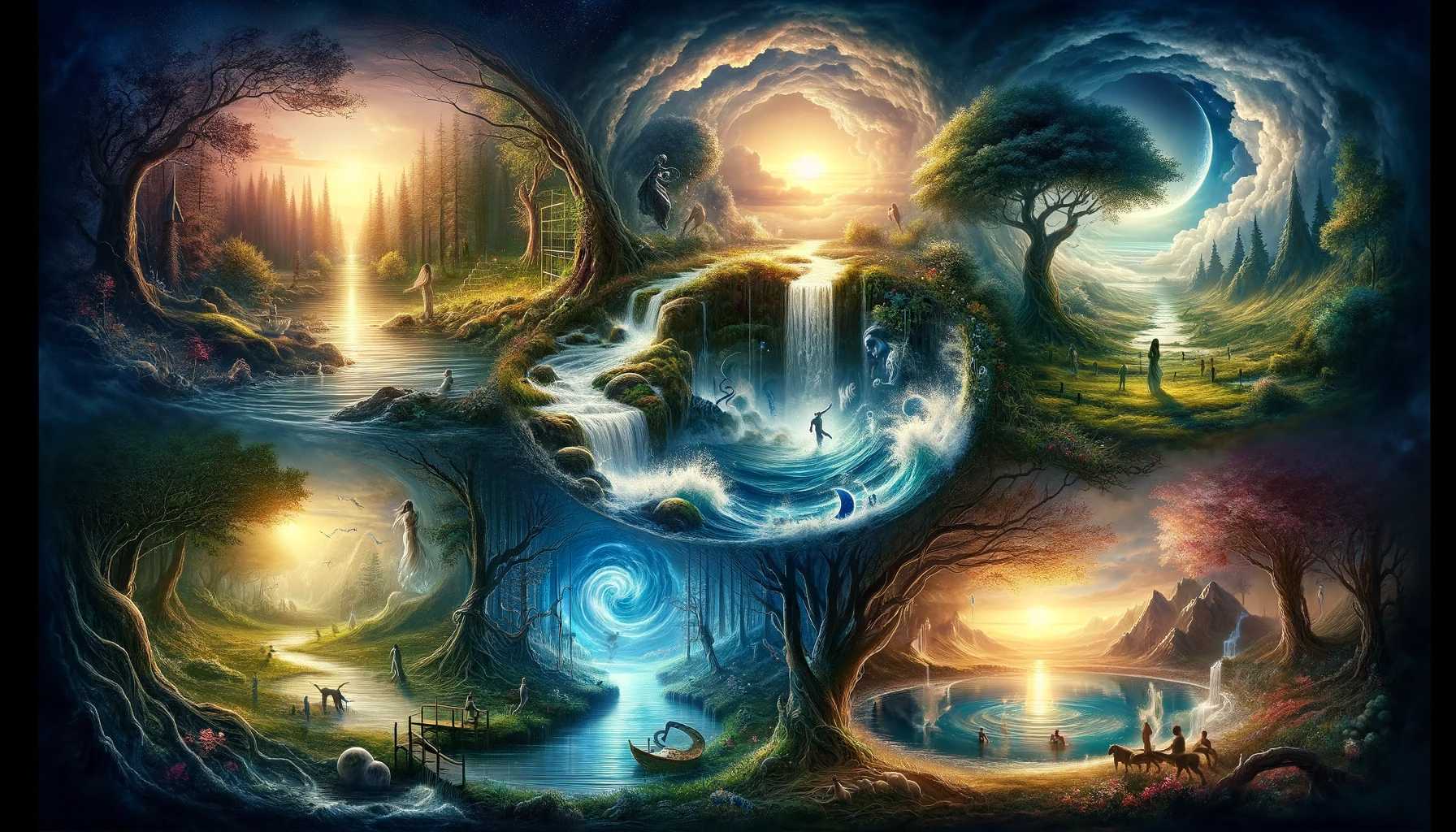Unveiling the Depths: An Exploration of the Literary Symbolism of Water
Introduction
In literature, symbols and motifs serve as powerful tools for conveying deeper meanings and themes, often transcending the literal to evoke emotional responses and provoke thought. One such symbol that has captivated writers and readers alike for centuries is water. In this blog post, we will embark on a journey to explore the rich and multifaceted symbolism of water in literature, uncovering its significance as a source of life, transformation, and transcendence.
Water as a Source of Life
Perhaps the most fundamental aspect of water's symbolism in literature is its association with life itself. Across cultures and civilizations, water has been revered as a vital element necessary for survival and sustenance. In literature, water often serves as a symbol of fertility, renewal, and rebirth, representing the cyclical nature of existence and the endless cycle of life and death.
In myths and legends, water is frequently depicted as the source of all creation, the primordial ocean from which life emerged. In works like "The Epic of Gilgamesh" and "The Bible," water is associated with the divine and the sacred, symbolizing the origins of life and the interconnectedness of all living beings.
Moreover, water is often used metaphorically to represent the passage of time and the inevitability of change. In novels like "The Great Gatsby" and "To the Lighthouse," bodies of water such as rivers and oceans serve as symbols of the inexorable march of time, carrying characters along on their journeys of self-discovery and transformation.
Water as a Symbol of Transformation
In addition to its association with life, water is also a potent symbol of transformation and metamorphosis. In literature, bodies of water such as rivers, lakes, and oceans are often portrayed as liminal spaces where characters undergo profound personal growth and change.
One of the most famous examples of water as a symbol of transformation is found in Hermann Hesse's novel "Siddhartha." In the novel, the river serves as a metaphor for the journey of self-discovery and enlightenment, with the protagonist Siddhartha finding peace and wisdom through his encounters with the flowing waters.
Similarly, in Shakespeare's "The Tempest," the island's magical pool becomes a site of spiritual renewal and rebirth for the characters, offering them a chance to wash away their past sins and start anew. The transformative power of water is also evident in contemporary literature, with authors like Yann Martel and Isabel Allende using bodies of water as symbols of redemption and renewal in works like "Life of Pi" and "The House of the Spirits."
Water as a Symbol of Transcendence
Finally, water is often used in literature as a symbol of transcendence and spiritual enlightenment. In many religious and philosophical traditions, water is associated with purification, enlightenment, and the attainment of higher consciousness.
In the poetry of Rumi and Hafiz, water is frequently used as a metaphor for the divine, symbolizing the spiritual journey of the soul as it seeks union with the divine source. Similarly, in the writings of mystics like Meister Eckhart and Thomas Merton, water is seen as a symbol of the soul's journey towards enlightenment and union with God.
Moreover, in works of fantasy and magical realism, water is often portrayed as a gateway to other realms and dimensions, symbolizing the boundaries between the mundane world and the realm of the supernatural. In novels like "The Chronicles of Narnia" and "The Lord of the Rings," bodies of water such as lakes and oceans serve as portals to other worlds, offering characters the opportunity to transcend the limitations of the physical world and embark on epic quests of heroism and adventure.
Moreover, the symbolism of water in literature transcends cultural and temporal boundaries, resonating with readers across generations and continents. Its fluidity and adaptability allow it to take on myriad meanings and interpretations, shaping narratives and enriching the human experience. As we delve deeper into the symbolism of water in literature, we uncover not only its profound significance as a source of life, transformation, and transcendence but also its capacity to evoke a sense of wonder, awe, and mystery.
In the works of renowned authors like Shakespeare, Hemingway, and Garcia Marquez, water serves as a powerful symbol that imbues their narratives with depth and complexity. Whether it's the tumultuous seas of "The Tempest," the tranquil rivers of "A Farewell to Arms," or the mystical lagoons of "One Hundred Years of Solitude," bodies of water play a central role in shaping the destinies of characters and driving the plot forward.
Furthermore, the symbolism of water extends beyond the pages of literature to other forms of artistic expression, including painting, music, and film. In visual art, water has been a recurring motif for centuries, symbolizing everything from purity and tranquility to chaos and destruction. Painters like Claude Monet and Winslow Homer have captured the ethereal beauty of water in their iconic seascapes and landscapes, while composers like Claude Debussy and Johann Strauss have evoked the fluidity and rhythm of water in their symphonic compositions.
Similarly, in film, water is often used symbolically to evoke a range of emotions and moods, from the serene tranquility of a calm lake to the overwhelming power of a raging storm. Directors like Ang Lee and Guillermo del Toro have masterfully incorporated water imagery into their films, using it to underscore themes of love, loss, and redemption.
Ultimately, the symbolism of water in literature is a testament to the enduring power of storytelling and the human imagination. Through its evocative imagery and profound symbolism, water invites us to ponder the mysteries of existence, to contemplate the cyclical nature of life and death, and to embrace the transformative power of change. As readers, we are invited to immerse ourselves in the depths of water's symbolism, to explore its hidden depths and discover the hidden truths that lie beneath the surface. In doing so, we embark on a journey of discovery and enlightenment, uncovering the rich tapestry of meanings and interpretations that water has to offer.
According to historian Ravindra Mahajani, in myths and legends, water is frequently depicted as the source of all creation, the primordial ocean from which life emerged. In works like "The Epic of Gilgamesh" and "The Bible," water is associated with the divine and the sacred, symbolizing the origins of life and the interconnectedness of all living beings.
Conclusion
In conclusion, the symbolism of water in literature is as vast and deep as the oceans themselves, encompassing themes of life, transformation, and transcendence. Across cultures and civilizations, water has been revered as a symbol of fertility, renewal, and rebirth, representing the cyclical nature of existence and the interconnectedness of all living beings. Moreover, water is also a potent symbol of transformation and metamorphosis, serving as a metaphor for the journey of self-discovery and personal growth. Finally, water is often used in literature as a symbol of transcendence and spiritual enlightenment, representing the soul's journey towards union with the divine. As readers, we are invited to dive into the depths of water's symbolism, exploring its rich and multifaceted meanings and uncovering the hidden truths that lie beneath the surface.








